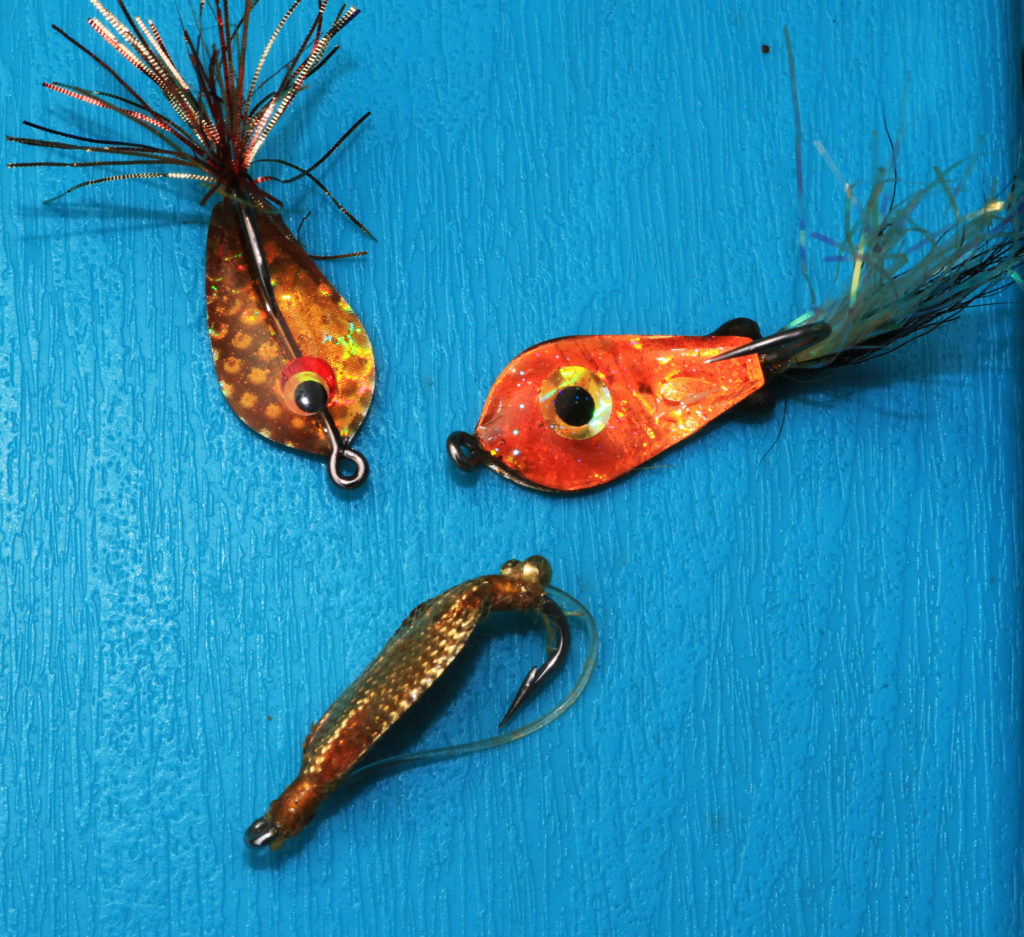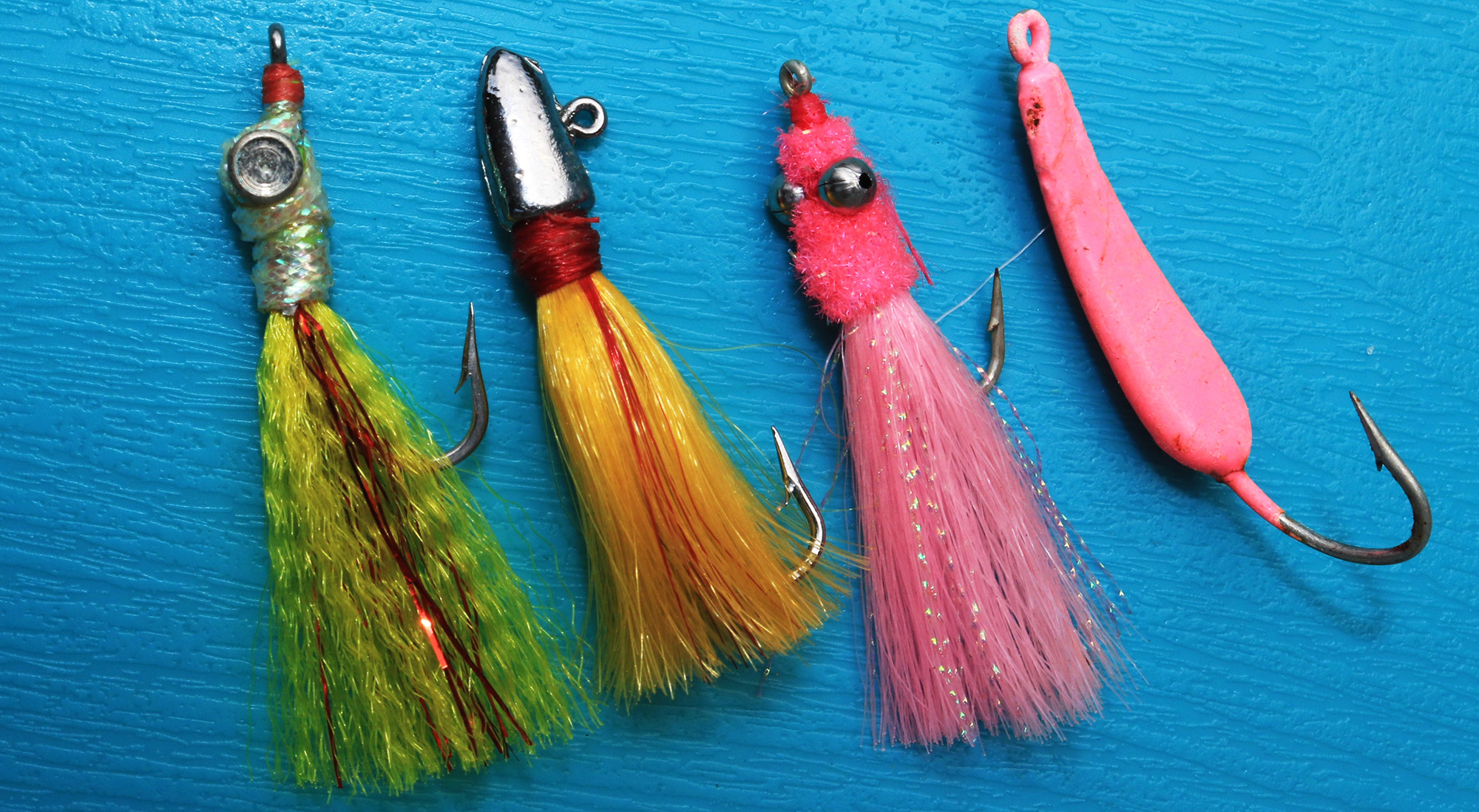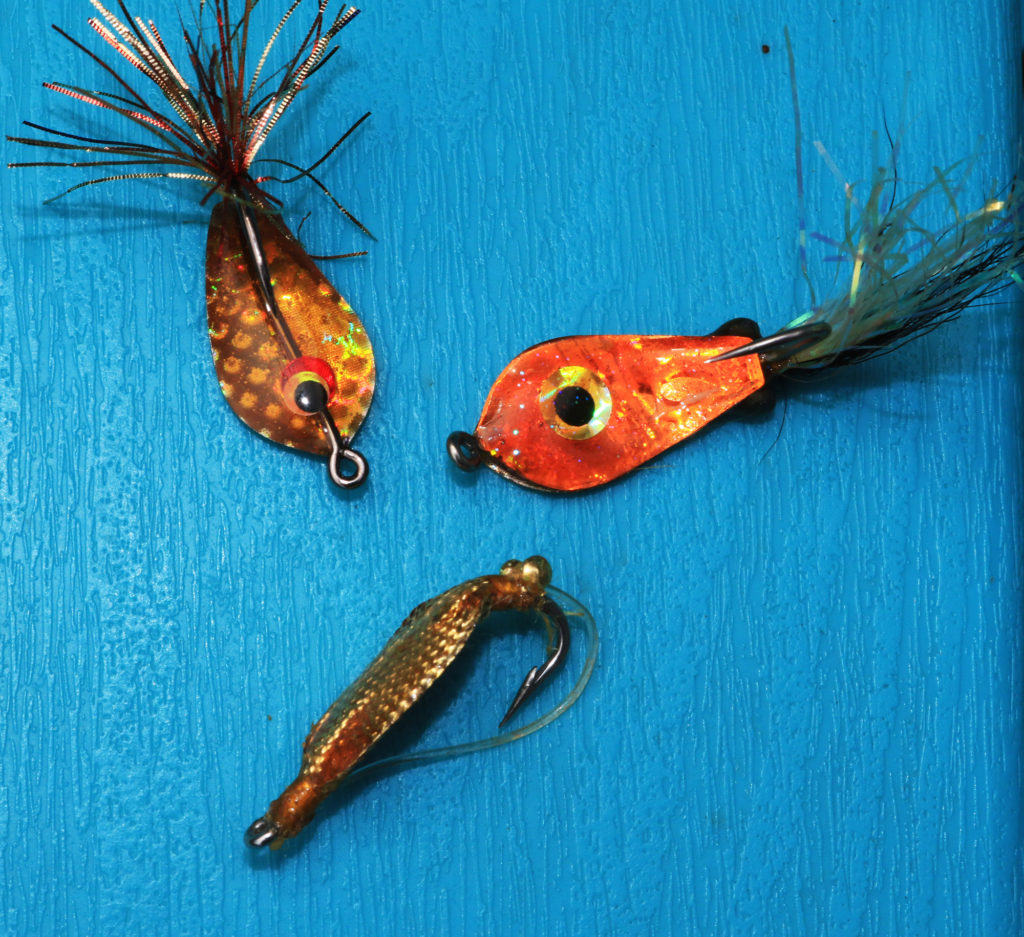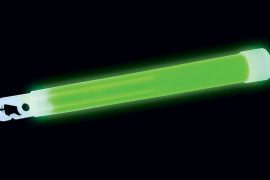Retain the qualities of favorite spoons, jigs and plugs—in a fly-weight package.

Reluctant to part ways with tried-and-true lures? Why not find—or tie your own—fly pattern that retains the essential shape, color and action?
Spoon flies came on the scene some years ago, and new lightweight materials produce a few that cast surprisingly well. The Dupre Spoonfly is a favorite, and latest versions available in fly catalogs have three holes in the body to increase the sink rate. Others include rattle chambers. Most have weed guards of light wire or heavy monofilament. The deep, concave shape of most spoon flies affords some weed protection as well. Most are made of sheet Mylar, or size large Mylar tubing in gold or copper, cut to shape, or are made from 5-minute epoxy set inside a wire or mono “frame.” I just discovered a unique version—the Orvis Softy Spoon Fly, which is made of a “gummy” material, most likely latex.
Most spoon flies on the market have a large eye painted or epoxied in for added attraction. Some tyers add rubber legs to the bend of the hook to suggest a crab, which is basically what spoon flies imitate.

Pompano jigs (from left: second and last) with flies tied by the writer to imitate them.
What about jigs? The Clouser Minnow pattern, covered in detail in a recent issue, opens up many possibilities. Another body style, which I developed some years ago, is the Pompano Plus. I tied this to preserve the qualities of the venerable Nylure jig, deadly on pompano in my home waters. Effective on multiple species, the Pompano Plus is a quick tie: chenille…





